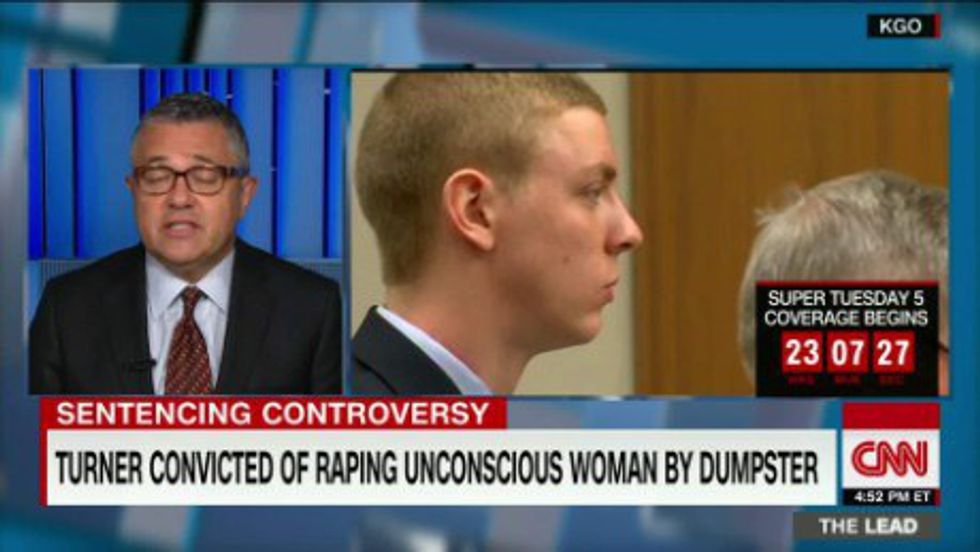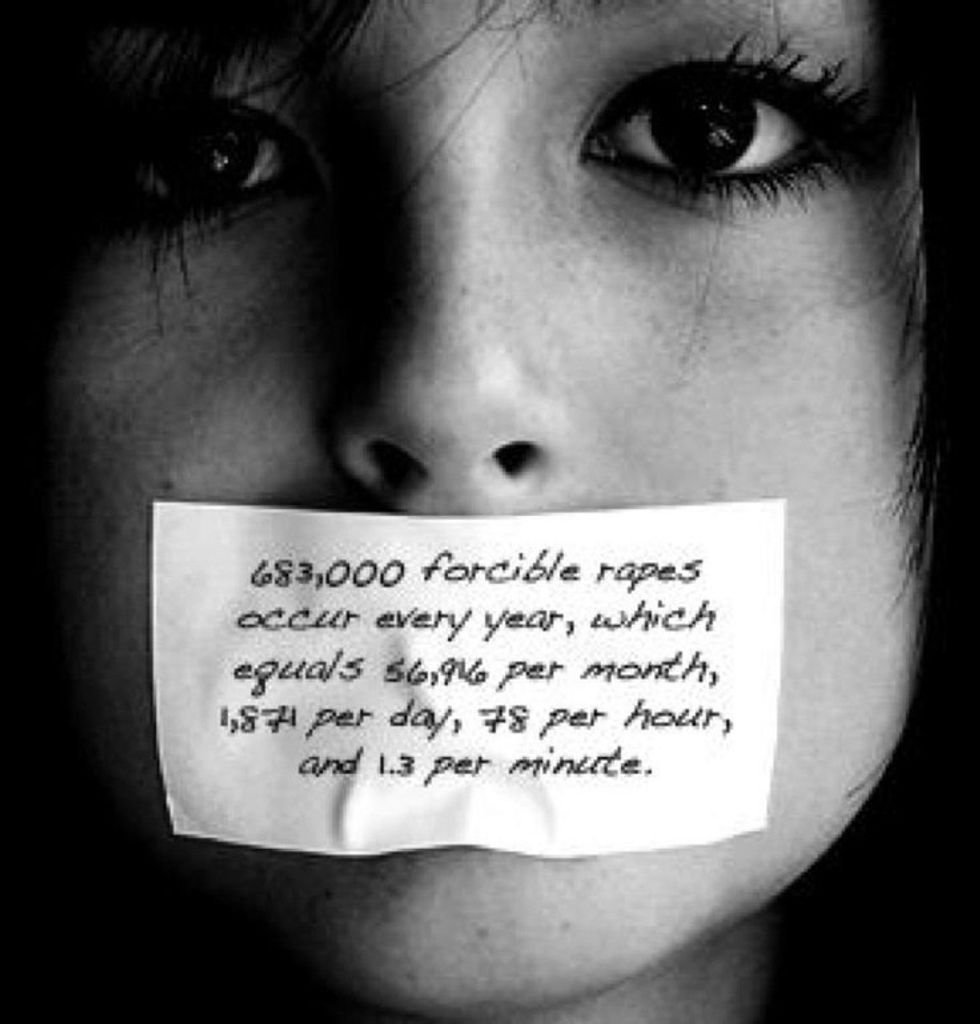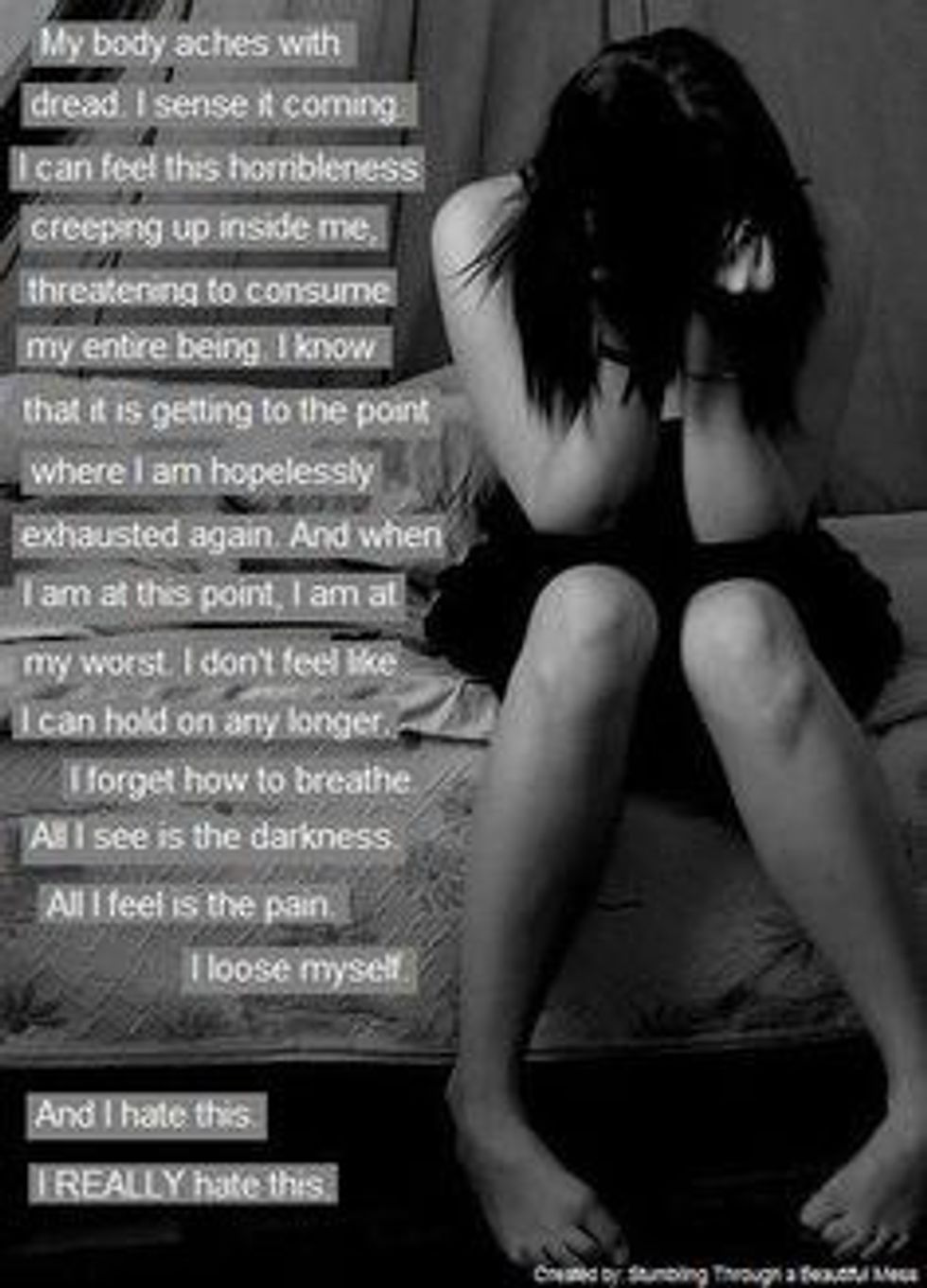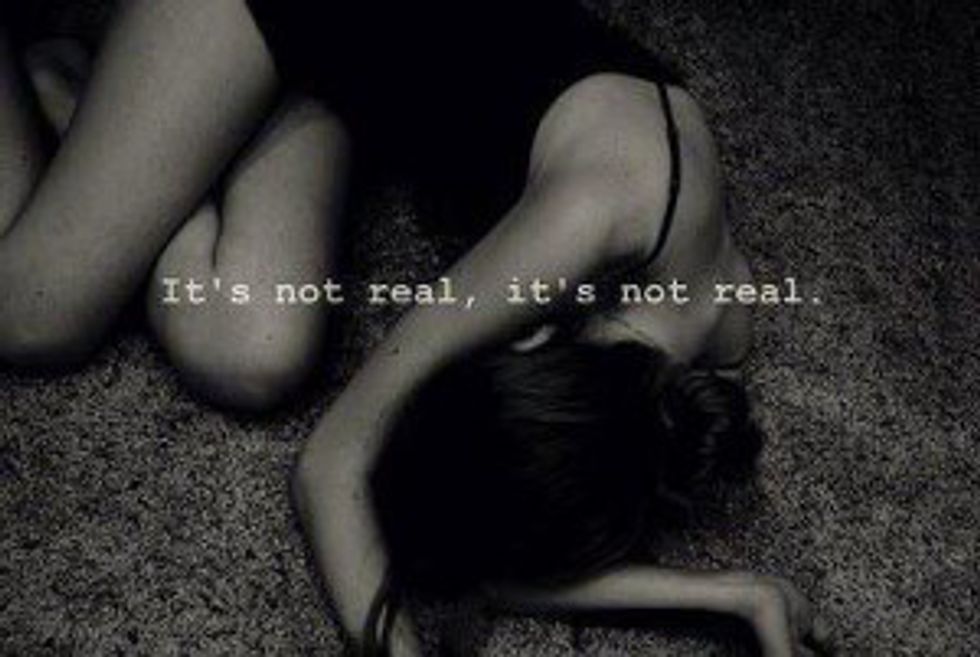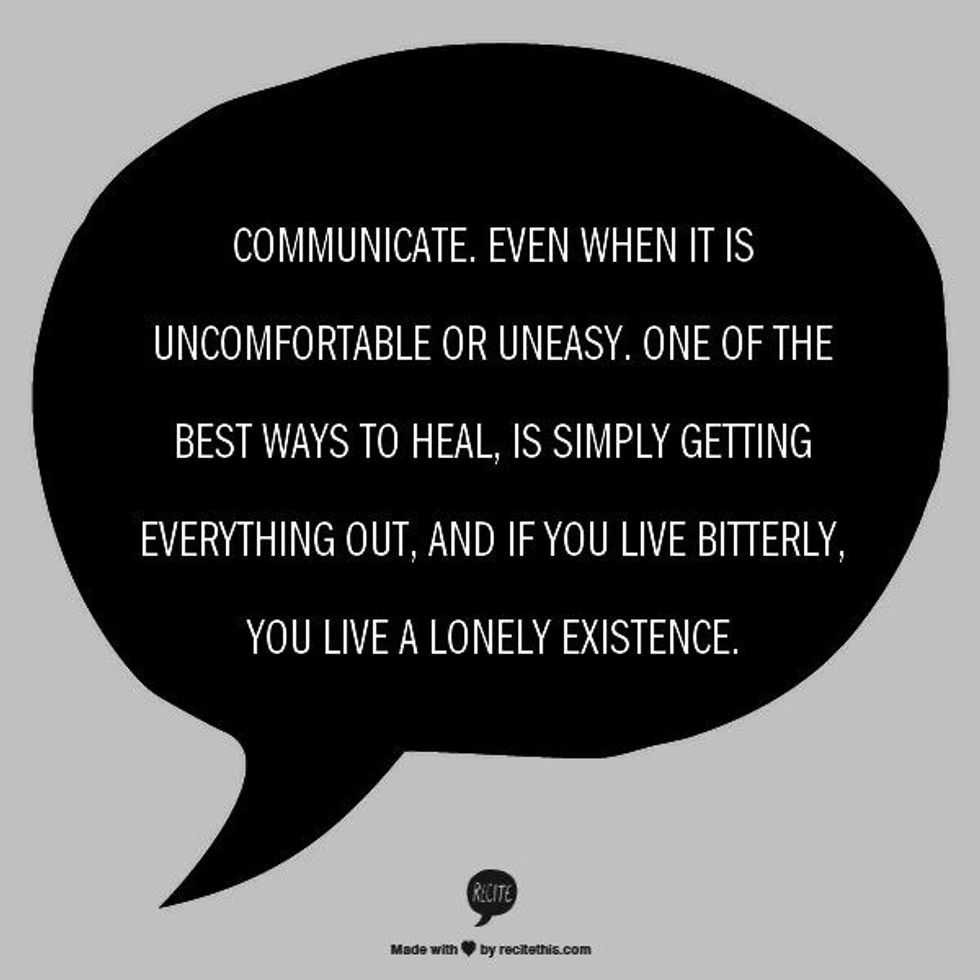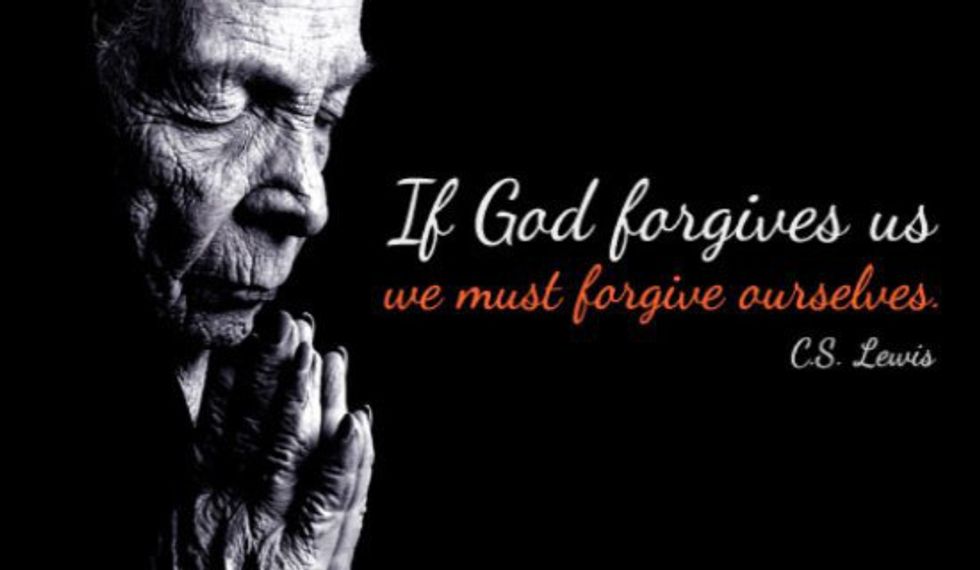Two Stanford students were going to a frat party on bicycles when they saw what they described as a tall, athletic man, thrusting atop a half-naked woman, who wasn't moving at all.
A 23-year-old woman, referred to as "Emily Doe" because her name is being withheld to protect her privacy, was sexually assaulted by a former Stanford University swimmer.
Brock Turner, 20, was found guilty.

Turner and Doe, who was not a Stanford student, went to a fraternity party that evening.
Tuner says he arrived at the party at 11 p.m.
He kissed a few women before leaving the party to hook up with Doe, who was later found unconscious behind a dumpster.
When Turner realized that the two Stanford students spotted him he tried to run away, but the students held him down and called the police.
Turner was arrested Jan. 18, 2015.
Photo by: www.cnn.com
A judge named Aaron Persky in Santa Clara County, Calif., gave Turner six months in jail and three years probation for three felony accounts of sexual assault.
Persky said a stiffer sentence would have a "severe impact" on Turner.
Stanford law professor Michele Dauber thinks a conflict of interest impacted Persky's decision. She believes that because Persky attended Stanford as captain of the lacrosse team, he bent over backwards to accommodate Turner, who is also an elite swimming athlete.
Photo by: www.thedailybeast.com
Turner will be registered as a sex offender.
With good behavior, Turner's sentence will be lowered to three months.
Photo by: www.snopes.com
Doe read a letter in court about how rape has negatively affected her life.
Her letter stated that the defense lawyer's questions about what she wore that night, and her attacker’s sentence, were unjust because of male and class privilege.
Many people believe that Turner received a lenient sentence.
The public was outraged after hearing that Turner's father complained that, "his son's life had been ruined for '20 minutes' of action, fueled by alcohol and promiscuity."
Photo by: www.pinterest.com
*If you or a friend have been victims of a sexual assault, and you would like to speak with a counselor, call Rape Crisis Cape Town Trust's 24-hour crisis line at: (021) 447-9762*
What happens to a victim after rape?
Rape Trauma Syndrome (RTS) is the medical term given to the response that most survivors have to rape.
An individual’s response to rape is determined by the nature of the traumatic event.
There are three main elements involved with rape:
Surprise, the threat of death and the threat of injury.
Rape violates an individual physically and emotionally.
Victims often experience post-traumatic stress disorder like that of combat veterans in war, but on a physical, behavioral and psychological level.
Photo by: www.pinterest.com
According to Rape Crisis.org, "The symptoms of RTS should not be confused with a mental disorder or illness because they are physical, behavioral and psychological responses."
Physical symptoms of RTS:
Shock, gynecological problems, a soreness or irritation of the body, bleeding, sexually transmitted diseases, pain in the lower back/abdomen, bruising, cuts, other injuries, sleep disturbances and eating disorders.
Photo by: www.pinterest.com
Behavioral symptoms of RTS:
Crying, difficulty concentrating, anti-social or not wanting to be alone. Being more easily frightened or startled than usual, being overly alert and watchful, relationship problems, fear of sex or loss of interest in sex, substance abuse, increased washing/bathing, using too much perfume/cologne, drop in school or work performance and denial.
Photo by: www.pinterest
Psychological symptoms of RTS:
Fear, anxiety, self-blame, guilt, humiliation, shame, helplessness/hopelessness, low self-esteem, anger, feeling dirty, feeling alone, confusion, loss of memory, having flashbacks to the rape — feeling like it is happening again, depression and suicidal thoughts and nightmares.
Photo by: weheartit.com
How can an individual cope with RTS symptoms with God?
In the devotional, "Getting Past Your Past," by Harmony Grillo, she shares about a time in her life when she went through sexual abuse, rape and worked as a stripper under the control of an abusive boyfriend.
Photo by: twitter.com
Grillo shares the steps she took on her pathway to finding healing:
Step 1. Facing The Pain
Grillo spent years not dealing with the pain that sexual abuse brought to her life. As a result, her pain manifested in low self-esteem, and she was vulnerable to dysfunctional relationships.
When she came into contact with a friend who showed her God’s unconditional love, she eventually felt compelled to experience it for herself. She fell in love with God. She discovered the truths that she is deeply loved, valued and purposed, which took root in her heart. Empowered by these revelations, she walked away from stripping and the abusive relationship.
Jeremiah 6:14, “You cannot heal a wound by saying it’s not there.”
Sometimes, we believe that the cure to our problems is to shove them under the rug. Attempts to escape pain can create unhealthy patterns. We must face our pain to overcome it.
Photo by: www.picturequotes.com
Step 2. Breaking The Silence
Grillo remained isolated from others for a long time, in fear of them getting too close to her and discovering her past. She avoided telling others she was sexually abused because she was afraid something bad would happen.
James 5:16, “Confess to one another, to produce healing.”
Breaking the silence is part of God’s plan for healing in our lives.
Talking about your past with confidants or a counselor gives you the ability to experience support or the gift of knowing you're not alone.
Photo by: ukpinterest.com
Step 3. Replace The Lies
Grillo used to believe a lot of lies, such as that she was worthless and was destined to be abused or abandoned by any male she would ever care for. She began to make choices based on those deep beliefs.
Romans 12:2, “Be transformed by the renewing of your mind.”
2 Corinthians 10:5, “Take captive every thought, making it obedient to Christ.”
We all have the choice to identify with and take hold of lies we believe by replacing them with truth. Accept the truth: We are all wildly loved by a faithful God. The truth will set you free.
Photo by: www.pinterest.com
Step 4. Not a victim anymore
Individuals can choose whether they will remain victims or not.
Grillo says, “We can’t change what happened to us yesterday, but we can decide where we will go from here.”
Grillo challenges readers with a choice: “You can either focus on the obstacles that keep you stuck in the conditions and mindsets that perpetuate your sense of victimhood, or you can walk towards freedom and healing.”
Romans 8:37 “With God’s strength we have the capacity to survive and overcome victimization.”
Photo by: www.lovethispic.com
Step 5. The hard work of forgiveness
Grillo says, “Forgiveness isn’t an endorsement, and it certainly isn’t accompanied by warm, fuzzy feelings. Forgiveness is the choice we make.”
Colossians 3:13, “Forgive others, just as God generously extends His forgiveness to us.”
Forgiveness is setting someone free, and realizing the prisoner was you.
Grillo was left with rage and anger toward the person who raped her.
In many cases, the person who has hurt someone goes on living their lives, often unaware of the depth of pain they caused someone. The victims are then left with pain, anger, hurt and bitterness.
According to Grillo, when she went before God and released the person who abused her to Him with forgiveness, this wasn’t easy, but it brought her healing and peace.
Forgiveness also begins with the you. Forgive yourself because it was never your fault. Despite what others may say, no one asks or deserves to be abused.
Photo by: likesucess.com
Step 6. Your Story Matters.
Grillo found the courage to share her story with her church and then with the world because she made the decision that her story belonged to God.
Proverbs 31:8-9, “Be a voice for the voiceless.”
Other people need to hear stories to overcome the barriers they are facing. When an individual shares their story they help others to know that they are not alone and that healing is possible. Every story matters.
Photo by: clarksonlawfirm.com
Step 7. Used For Good
Even with faith in God, bad things may still happen in people’s lives.
However, our hope lies in the truth: God has a good plan for your life.
But the devil has a plan too.
Jeremiah 29:11, “The enemies plan is to steal, kill and destroy.”
Grillo believes that in the midst of hardships in her past, she was tempted to doubt her faith in God, and she began to believe that the devil's plan was winning in her life.
She has come to the conclusion that God is good, His character can be trusted and His plan for her life is still good.
Photo by: www.bestlovequoteslove.com
Addressing victims of sexual abuse, Grillo says, “I know that God can provide healing in your lives too. If you let Him, He will take everything the enemy meant for harm in your life and use it for good.”
Photo by: www.pinterest.com
Here is a video of Harmony Grillo sharing her story.




